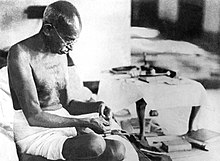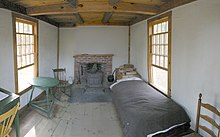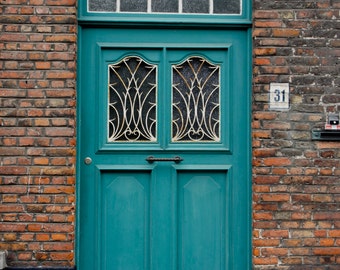Part of the attraction of living on Lopez Island is that life here is so much slower. (It is called Slopez for a reason.) But why is that so attractive to me? Yes, we're forced to unplug from cell phones, have no traffic, and trips to the mainland or the other islands involve waiting for ferries. But our slower life also offers the time, the lifestyle, to think. I guess I never really thought about that (okay, okay, pun intended).
The following article, found at
http://www.dailygood.org/story/726/taking-back-the-time-margaret-wheatley/ explains why we need to slow down and take time to think. Thinking then gives clarity, from which intelligent actions may be planned. From actions comes change.
I just hadn't realized that I absolutely love this slower life because it gives me the space and time to really think, to work out the imponderables, to "be" with my thoughts. And I do find that I'm eager to take those actions that, hopefully, will make some changes.
But enough about me, please read on as to what Margaret Wheatley has to say:
As a species, we humans possess some unique capacities. We can stand apart from what’s going on, think about it, question it, imagine things being different. We are also curious. We want to know “why?” We figure out “how.” We think about what’s past; we dream forward to the future. We create what we want rather than just accept what is. So far, we’re the only species we know that does this.
But as the world speeds up, we’re forfeiting these wonderful human capacities. Do you have as much time to think as you did a year ago? When was the last time you spent time reflecting on something important to you? At work, do you have more or less time to think about what you’re doing, and are you encouraged to spend time thinking together with colleagues and co-workers?
In this culture, we’ve begun to equate productivity with speed. If it can be done faster, we assume it’s more productive. A recent trend in some companies is to hold meetings standing up. These meetings (or perhaps they should be called football huddles) are touted as more productive, but only because they take less time. No one measures the productivity of these meetings by asking whether people have developed wiser solutions, better ideas, or more trusting relationships.
If we could pause for a moment and see what we are losing as we speed up, I can’t imagine that we would continue with this bargain. We’re giving up the very things that make us human. Our road to hell is being paved with hasty intentions. I hope we can notice what we’re losing—in our day-to-day lives, in our community, in our world. I hope we’ll be brave enough to slow things down.
Thinking is the place where intelligent actions begin. When we pause to look more carefully at a situation, we can see more of its character, think about why it’s happening, and notice how it’s affecting us and others.
Brazilian educator Paulo Freire used critical thinking as a non-violent approach to revolutionary change. First in his home country and then in poor communities around the world, he taught people how to think about their lives and the forces that were impoverishing them. Nobody believed that poor, exhausted and struggling people could become intelligent thinkers. But it is easy for people to develop this capacity when they see how thinking can save their lives and the lives of those they love.
To think about whether you’re losing anything of value in your life, here are some questions to ask yourself: Are my relationships with those I love improving or deteriorating? Is my curiosity about the world increasing or decreasing? What things anger me today, as compared to a few years ago? Which of my behaviors do I value and which do I dislike? Generally, am I feeling more peaceful or more stressed? Am I becoming someone I admire?
If answering those questions helps you notice anything in your life that you’d like to change, you will need time to think.
But don’t expect anybody to give you this time to think—you will have to claim it for yourself. Thinking is always dangerous to the status quo and those benefiting from the present system have no interest in your new ideas. In fact, your thinking is a threat to them, because the moment you start thinking, you’ll want to change something. You’ll disturb the current situation. So we can’t expect those few who are well-served by the current reality to give us time to think. If we want anything to change, we are the ones who have to reclaim time to think.
Notice that in American culture, thinking is not highly prized. In our frenzy to make things happen, to take action, we’ve devalued thinking and often view it as an impediment to action. We talk about needing to get things done now. We’ve created a dualism between thinking and acting, between being and doing. Personally, I find this both dangerous and nonsensical.
There is no distance between thinking and acting when ideas mean something to us. When we look thoughtfully at a situation and understand its destructive dynamics, we act to change it. We don’t sit around figuring out the risks or waiting until someone else develops an implementation strategy. We just start doing. If an action doesn’t work, we try something different.
Governments and organizations struggle with implementation, and in any bureaucracy there’s a huge gap between ideas and actions. That’s because we don’t buy into the ideas—we didn’t invent them, we know they won’t really change anything, and we won’t take risks for things we don’t believe in. But when it’s our own idea, a result of our thinking, and we see how it might truly benefit our lives, then we will act.
Taking the time to think about things that might truly change our lives always provides us with other gifts. Determination, energy and courage appear spontaneously when we care deeply about something. We take risks that are unimaginable in any other context.
Here’s how Bernice Johnson Reagon, a gifted singer and songwriter, describes her own and others’ fearless acts during the civil rights movement: “Now I sit back and look at some of the things we did, and I say, ‘What in the world came over us?’ But death had nothing to do with what we were doing. If somebody shot us, we would be dead. And when people died, we cried and went to funerals. And we went and did the next thing the next day, because it was really beyond life and death. It was really like sometimes you know what you’re supposed to be doing. And when you know what you’re supposed to be doing, it’s somebody else’s job to kill you.” (Quoted in Lovingkindness, by Sharon Salzberg.)
Most of us don’t have to risk our lives like that, but we may be dying a slow death. If we feel we’re changing in ways we don’t like, or seeing things in the world that make us feel sorrowful, then we need time to think—about where we are now and how we might start to change things. We need time to develop clarity and courage. If we want our world to be different, our first act is to reclaim the time to think. Nothing will change for the better until we do that.














